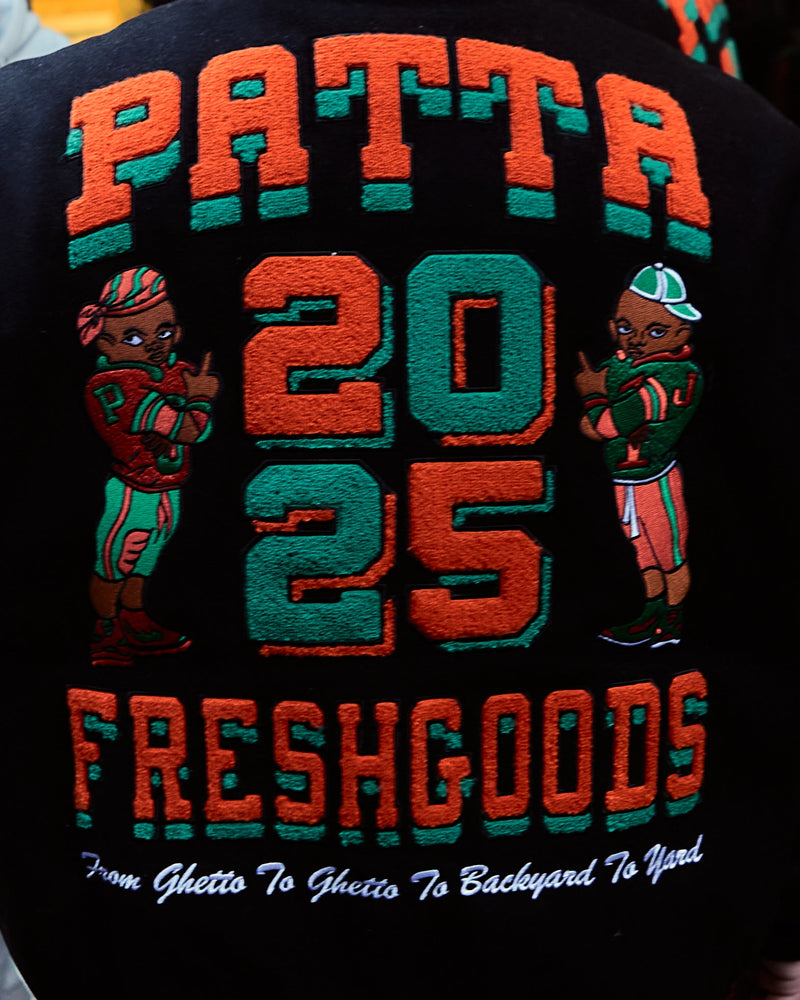
Get Familiar: Dion Rosina
-
Get Familiar
-
Get Familiar

For OSCAM'S second art exhibition in their new location, Patta curators Violette Esmeralda (head of photography) and Lee Stuart (brand director) have selected a variety of artists from Gilleam Trapenberg, Wes Mapes, Stacii Samidin, Serana Angelista, Shertise Solano, Jeanpaul Paula to Dion Rosina. The show has closed due to COVID-19 safety measures, but we still feel you should get to know all participating artists. Next up: Dion Rosina.
Hi Dion, as a quick introduction to our readers,
who are you and how would you describe your art?
I’m Dion Rosina, I’m a visual artist who makes work based on photos. Collecting and archiving photos from different time periods are an important part of my creation process, as these are the starting points for a work. In my work there are usually figures that appear to be in a psychologically charged environment with an indefinable context.
I investigate the ways in which I can interpret my found photos and create a new image with a different ambiance. With aesthetics I try to catch the eye of the viewer, but through suggestiveness and subtle references I reflect on different themes.
I don’t want too much clarity in my work. I want riddles that don't need a certain solution. In my work I show some recognisable images. But not too much. I want to leave things open.
How did your relationship with art begin?
The first contact with art was seeing my father's drawings. He always drew faces en profile. At a certain point I started imitating that. From my imagination I also started to draw faces on every paper I came across. The face is something that fascinates me to this day, I think this can be seen in my work.
What do you feel an artist needs to add on a cultural level?
I find it fascinating when the artist pushes the 'limits' of his fascinations and depicts them in his work. I think that your work can automatically add to culture. If your work can subsequently appeal to a diverse audience, I find that interesting.
What messages are you trying to convey to your audience through your art?
Everyday we get to see all kinds of images through different channels and some images we consistently don’t see. However, they are there and I search for them to use in my work. Because I am partly dependent on that, my relationship to these images is very important. It is a big factor that can determine how the viewer experiences my work.
Please explain your creative process.
My creative process starts with the photos that I collect. A photo is often the reason for creating a visual work. I always print the photos and select the ones who have an interesting relationship with each other. Here I look, for example, at form, composition and as for faces, I also look at expression. At the same time, I usually already have an idea of what the images convey to me and what I want to do with the image. Depending on the moment, I cut out the images and I create collages to use it as a reference or I use the printed photo directly as a reference for a work that I will make.
While creating I like to listen to abstract music.
What is your favourite part about being a painter?
I do not label myself as a painter, although it is the foundation of my artistry. In addition to painting, I also draw and make collages and perhaps more will be added in the future. When I change the question to "What is your favourite part about being an artist?"
The infinity of the search for new knowledge, the (learning) process, the satisfaction of creating and the intimacy that I experience with images are my favourite aspects of being an artist.
What is the hardest part of being an artist?
I think this is very dependent on the phase the artist finds himself in. For me, at the moment I think it is a shame that there are too few hours in a day to do my work.
What part is the most rewarding?
The most rewarding is when you have decided that a work is good and that you can start to appreciate it. In addition, the appreciation that a viewer shares about your work is also very rewarding.
How did you get linked to Patta?
Lee Stuart approached me on Instagram and asked me if I wanted to be part of the exhibition that he was going to put together. I feel honoured!
What advice would you give to young artists trying to find their voice?
Create as much as possible. Investigate your fascinations and explore their limits and be obsessive. Trust the process and interpret comments/criticism from others in such a way that they serve you and your work.
What does the following quote mean to you?
“We will be here forever
Do you understand?
Forever
Forever and everAnd ever and ever
We will be here forever
Do you understand that?
Get what I'm saying
Forever!"
This quote has several meanings for me, it is the chant of a group that announces its existence that you will be dealing with forever, whether you want to or not. In addition, for me it is a reference to Hip-Hop, something that can exist forever because it is not a physical entity.
Related Articles
-
 Patta and Joe Freshgoods came together right in the heart of the Dutch capital to celebrate community, creativity, and everyday spaces that raise us. Here is what went down as seen by Andrea Amponsah and Dennis Branko. We kicked things of at Patta Amsterdam before heading into the night at Contra for a night of fun, food, family and friends soundtracked by Bao G, NADIM, Cheyanne Hudson, DJ Drivah, and Lil’ Vic hosted by Mister V.I. Be sure to keep your eyes on our socials to be part of our next community event, word on the street is Berlin is next...
Patta and Joe Freshgoods came together right in the heart of the Dutch capital to celebrate community, creativity, and everyday spaces that raise us. Here is what went down as seen by Andrea Amponsah and Dennis Branko. We kicked things of at Patta Amsterdam before heading into the night at Contra for a night of fun, food, family and friends soundtracked by Bao G, NADIM, Cheyanne Hudson, DJ Drivah, and Lil’ Vic hosted by Mister V.I. Be sure to keep your eyes on our socials to be part of our next community event, word on the street is Berlin is next... -
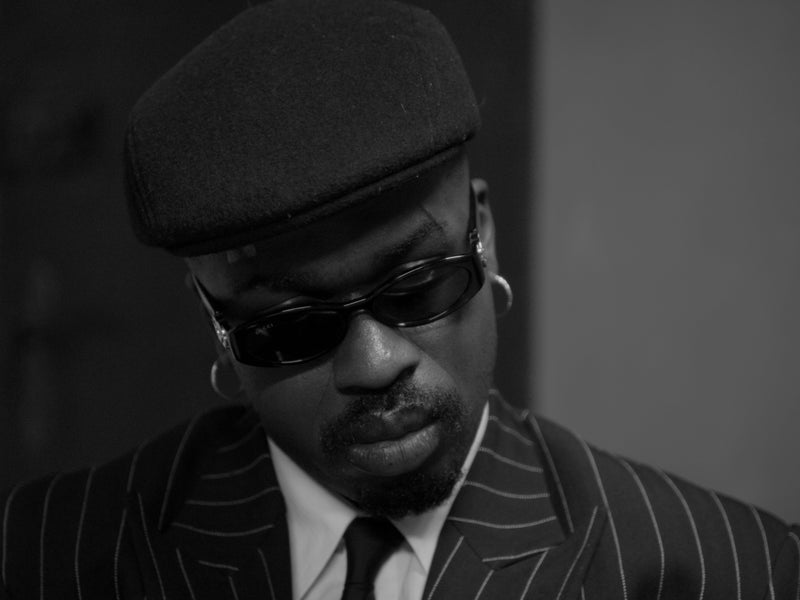
Get Familiar: BOJ
Get Familiar: BOJ
Interview by Passion DzengaFor more than a decade, BOJ has been one of the most quietly influential forces in contemporary African music. A pioneer of the alté movement long before it had a name, he built his world on experimentation, collaboration, and a refusal to be boxed in — working with everyone from Wizkid, Skepta, Dave and Tiwa Savage to Ayra Starr, Knucks and Obongjayar. But with his new album Duplicity (out December 5 via MOVE Recordings), BOJ turns his lens inward, crafting the most personal and revealing body of work of his career.Across thirteen tracks featuring Pa Salieu, Olamide, Odumodublvck, Show Dem Camp, SGaWD, Obongjayar, Joey B and more, Duplicity pushes the alté ethos into bold new terrain — blending Afropop, hip-hop, alté, Afrobeats and experimental club sounds with a clarity and confidence that only an artist a decade deep can carry. But beneath the genre-blurring production lies the album’s true centre: a meditation on duality. The BOJ the world sees — charismatic, collaborative, unmistakably influential — and the BOJ only a few truly know.It’s a theme that emerged unexpectedly from a personal moment. After hearing the word duplicitous in an argument and looking up its meaning, BOJ recognised a truth he felt almost everyone carries: the split between our public selves and our private ones. Duplicity became the space where he finally examined that divide with honesty — embracing both the extrovert the world encounters and the introspective figure who exists beyond the spotlight.The album’s visual identity deepens this narrative, contrasting light and dark, safety and danger, confidence and conflict. On record, those contrasts come alive through everything from the euphoric Afropop of “Imposter Syndrome” with Obongjayar to the menacing, experimental “Italawa” with Odumodublvck and SGaWD, the dance-floor lift of “Ijo,” and the endlessly catchy “Cana” with Pa Salieu.Sitting down with BOJ in the days leading up to the album’s release, we talk about the vulnerability behind Duplicity, the producers and collaborators who helped shape it, the evolution of alté, lessons learned after ten years in music, and how he stays grounded between Lagos and London. What emerges is an artist more self-aware than ever — expressing, not explaining; revealing, not performing. This is Duplicity through BOJ’s own words.You’ve got a new record coming out called Duplicity. What’s the concept, and what does it reflect about where you are personally and artistically?Duplicity is an album that describes me perfectly. The “two sides” are really about the duality of man – who you are in private versus what you choose to present to the world. For me it’s about trying to find the balance between those two selves in my life right now.You’ve said the album explores your public and private sides. What inspired you to open up like this at this point in your career?Honestly, it started with an argument I had with a partner. She used the word “duplicitous,” and I didn’t even know what it meant. I went to look it up and thought, “Yeah, everyone is duplicitous to some extent.” That sparked the idea to explore that theme fully.Did making Duplicity feel therapeutic? Were there parts of the process that surprised you about yourself?I don’t know if anything shocked me, but talking about situations like this at all is not something I’d usually do. So in that sense, yes. I definitely allowed myself to be more vulnerable at certain points, which is new for me.Sonically, the album fuses Afropop, hip-hop and more. Were there any guiding principles for the sound while you were making it?Not really – if anything, it was the opposite. We weren’t trying to tailor it to any particular sound. I told Junior, the producer I worked most closely with, “Let’s just be free. Whatever comes out, we go with it.” No box, no strict formula.You’re often called a pioneer in the alté movement. Does Duplicity feel like a continuation of that sound or a departure?I always feel like my sound gets elevated as I grow, but with alté, people misunderstand it. There’s no fixed “alté sound.” Anything slightly left of centre gets labelled alté. For me, alté is really about not being boxed in – the freedom to create without restrictions. It’s a mentality, not a genre.Your process is usually very collaborative. Who are the key producers that shaped this record?This is actually the least collaborative I’ve ever been on a project. Genio did the lion’s share – I think 9 or 10 of the 13 tracks. Spax is someone I also worked closely with. Blaise Beats is a producer I’ve wanted to release something with for a while – he’d sent me packs in the past, but nothing had come out until now. On this album though, Genio is the main architect.You’ve also got loads of guest features, how did you decide who to bring into the world of Duplicity?I like working with people I already have relationships with. I’ll record a song, sit with it, then ask, “Who can help me tell this story?” Everyone on the project is someone I genuinely rate musically and can reach with a phone call. They understand me and the themes because we already talk in real life.You’ve collaborated with everyone from Odumodublvck to Wizkid and Skepta. What’s the one common thread that makes a collaboration really click for you?If I had to boil it down to one thing, it’s the music itself – the sound. I look for high quality in someone’s expression, and originality. Most people I work with have that.We recently hosted an Odumodublvck show in Amsterdam. You two have a strong collaborative history. What’s it like working with him?Odu is really cool – we’re pretty close. He’s one of those people who always speaks his mind, no matter what. I admire that. Musically, we just click – we probably have more collaborations together than I have with anyone else.Visually, the singles and artwork all tie into duality. How did you approach the visual storytelling for Duplicity, and who did you work with?I worked closely with a guy called Niyi Okoewo. I had him over, played him the music, told him what films I was watching, where my head was at. He just got it. He suggested directors, and even decided to shoot the photography himself. Everything came together organically.With this record, it feels like you’re proving alté is more a philosophy than a genre – especially by showing both sides of yourself. Is that intentional?That is what I’m doing, but I’m not consciously trying to prove anything or break any box. I’m just expressing myself as honestly as I can. However people interpret that is up to them.How do you stay true to your roots while still appealing to your audience? Has much changed since we last spoke?Yeah, there’s definitely been a change – mostly in mentality. I’ve learned a few lessons along the way. My sound keeps evolving, but the bigger shift is in how I see people and myself.In what way has your mentality changed?I’ve learned to let people be who they are, to choose who I keep around, and accept that everyone has shortcomings. No one’s perfect. I’ve also realised you have to be intentional about knowing yourself. Self-knowledge doesn’t just happen – you have to put in the work.After 10 years in music, what would you tell your younger self if you could go back?I don’t think I’d tell him anything crazy. I’d still want to make all the same mistakes; they made me who I am. The only thing I might change is warning myself not to associate with certain people.For someone discovering you through Duplicity, what is the best way to listen to it?They can start anywhere. I usually make my intros and outros so they could swap – the outro could be the intro and vice versa. You can start from track one or from the end. It all flows. That said, I prefer they start from track one.The album’s out on Friday. What can people expect from you in the next few months?There are things coming, but I don’t like giving too much away. I’ll let people know as it happens. If you want to stay updated, just follow me on socials.You spend time between Nigeria and the UK. Is there a difference in how your music is received in London versus Lagos?I’m in Lagos now. To be honest, I don’t think there’s a huge difference. I cater to a certain demographic – a certain taste level – and that listener exists in both places. It feels similar across cities, even globally.You recently held a listening party in London. What was that experience like?It was dope – a small listening session with friends and day-one supporters. We played the songs, especially the one with Odu, and just vibed. People really liked it.You’ve got another listening party coming up in Lagos. What can people expect? It’s basically the Lagos version of the London night. Day-ones will come through, we’ll play the album, I’ll talk through the songs and the mindset behind them. Just a proper vibe.And if people want to attend the Lagos listening party, how do they get access?They just need to RSVP through the channels we’ve shared. Once that’s done, they’re in. If they aren’t in Lagos they can stream the record, it comes out on the same day.-
Get Familiar
-
-

Patta x Joe Freshgoods
Patta x Joe Freshgoods
-
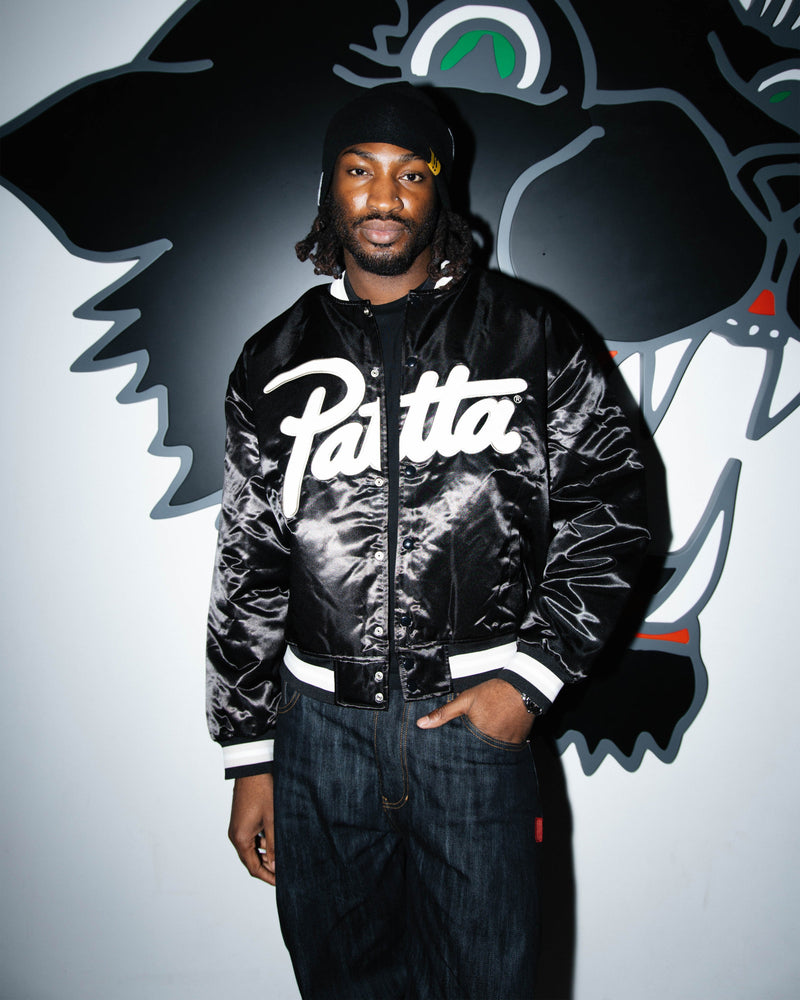
What went down at Odeal's listening session at Patta Amsterdam
What went down at Odeal's listening s...
This past week at Patta Amsterdam, we welcomed back Odeal for another special in-store listening experience. Thank you to everyone who came through and helped make this intimate session just as memorable as the first. Stay tuned for more moments like these at Patta Amsterdam.-
What Went Down
-
-
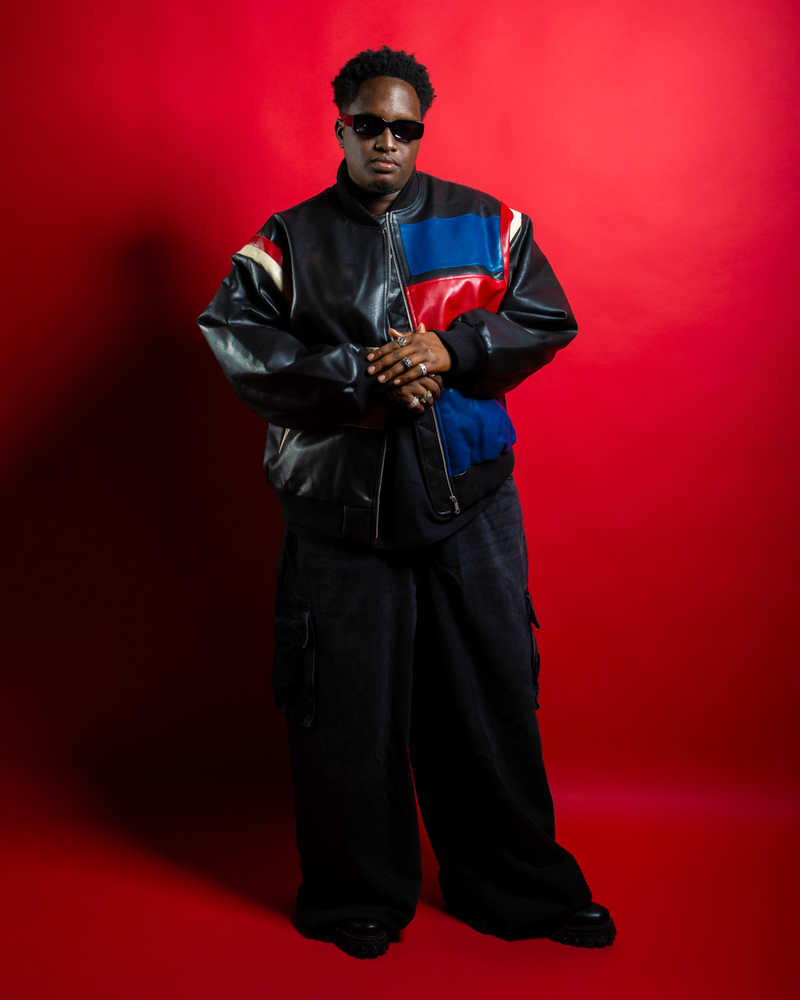
Get Familiar: Joshua Baraka
Get Familiar: Joshua Baraka
Interview by Passion DzengaBefore Joshua Baraka became a familiar name on lineups, he was a 17-year-old in Kampala playing piano in bars and serving on church worship teams. Raised in a house where his mother led worship and his father preached from the pulpit, music wasn’t a hobby so much as a second language—gospel, Radio & Weasel, Lucky Dube and Bob Marley all folding into the same soundtrack. That mix of faith, family and constant rehearsal quietly shaped the artist he is now: a writer who treats songs like stories, and performances like testimony.On his debut album Juvie, executive-produced by JAE5, Joshua steps fully into his coming-of-age era—channelling young adulthood, love, doubt and growth through a sound that fuses Afrobeats, R&B, gospel and soul without ever losing sight of home. Fresh off a sold-out European tour, AFRIMA nominations, and a show-stealing co-headline with Tems in Kenya, he’s thinking less about numbers and more about connection: making young listeners feel less alone, and making sure the world knows exactly where this voice comes from—Uganda, East Africa, and a lifetime of familiar melodies turned into something new. You’ve had quite a remarkable journey—from playing piano in Kampala bars at 17 to headlining European shows today. When you look back, what kept you going through the toughest moments?First and foremost, God. I’m a firm believer, and He’s helped me through a lot. My friends and family too—I have a tight-knit circle that keeps me levelheaded. My parents, my team… I’m blessed to have good people around me who help me stay focused on the vision.Growing up in Uganda, in Kampala, what were some of your earliest musical memories?It was amazing. Kampala is such an inspiring place because you’re constantly interacting with different people, and that means different music. I grew up listening to acts like Radio & Weasel, Lucky Dube, Bob Marley—plus a lot of gospel from church. All of that shaped how I view and make music.You mentioned church—how did that environment shape your musical style?Church music is rich. Very musical. I learned instruments there—mainly piano and keyboard—and we were always rehearsing, always arranging songs in new ways each week. That trained my composition skills and made me approach music from a deeply musical place.What influence did your family have on your musical journey?A huge one. My mum was a worship leader—she always kept music in the house, so I’ve basically been listening to music since the womb. She coached me when I first showed interest. My dad, who’s a pastor, would take me to church and introduce me to all the best musicians. He’s also a great writer, so I picked up writing from him.When did you first realise music could be your path, not just a dream?After high school. Music was the main thing I was doing, and it just clicked—this is what I should be doing consistently.Your debut album Juvie is on the way and it’s executive-produced by JAE5. How did that collaboration come together?We were connected through someone on my team, and when we met we clicked instantly. I spent a lot of time in London at his studio building the album from scratch. It was humbling—I’ve always admired JAE5, so getting to work closely with him was a blessing.What was the studio process between you two like?It depended on the vibe of the day. Sometimes I’d start with piano while he did drums, sometimes he’d start melodies while I wrote. We bounced off each other. Whoever was inspired in the moment would lead.Can you talk about the album itself? What does Juvie mean to you?Juvie is short for “juvenile”—it’s about young adulthood. My experiences, my views on love, relationships, life. It’s my first album, something I’ve always wanted to make, and I’m really excited for it.As one of Africa’s rising stars, how did you approach crafting the sound of the album?I fused all my influences—R&B, gospel, soul, Afro sounds. I’m from Africa, so the African touch is always there, but I didn’t restrict myself to only Afrobeats. Every song feels different but still rooted in where I’m from.What message do you hope young listeners take from this project?I want young adults to feel less alone. The things I sing about are universal—I've travelled and seen that we all go through similar experiences in different ways. I just want to give my perspective and hopefully inspire someone.If Juvie were the soundtrack to a movie, what genre would that film be?A coming-of-age film—life, drama, love, growth. That’s the world the album lives in.You just wrapped a sold-out European tour, including a major London show. How did it feel performing to fans around the world?It’s crazy—in the best way. Seeing people across the world resonate with your music is special. It shows me I’m on the right path. Every show inspires me.Any standout moments from the tour?The London show at EartH was huge—biggest venue, so much love. Berlin’s crowd was amazing. Denmark had incredible sound. Finland was special because it was my first time there, and realising I have fans there was surreal.Did you travel with your team during the tour?Yes, I travelled with my team. Most cities were playback sets, but London was with a full band based there. It was all very organised and smooth.You recently co-headlined a major festival in Kenya alongside Tems. What was that like?Incredible. So many people, lights in the crowd, everyone singing. I felt like a rockstar. I love Tems, so sharing a headline with her and meeting her was amazing.Do you prefer playing in new territories or being back home in Africa?New spaces. It’s like a first date—you’re experiencing each other for the first time. I love that energy.You’ve been nominated for two AFRIMA Awards this year. How does that feel?It’s overwhelming in the best way. Things you dream about or watch on TV suddenly happening to you… it means everything.How do you see Uganda—and East Africa overall—fitting into the global spotlight on African music?East Africans are incredible storytellers. The music is rich. The world’s eyes are starting to shift to places they haven’t explored yet, including Uganda. There’s so much talent here—I’m excited for people to discover it.Your single “Dive In” dropped on Uganda Independence Day. Was the timing intentional?Yes—it was my way of tipping my hat to where I’m from. My music is mostly in English and global-sounding, so it’s easy for people to not know I’m Ugandan. Releases like this remind people of my roots.Dive In deals with heartbreak, healing, and vulnerability. Was it hard to open up like that?Music is the only place I’m comfortable being completely vulnerable. In real life I’m more closed off. Dive In is about the fear of falling in love—but choosing to risk it anyway.What keeps you grounded as things keep growing around you?Faith, family, friends, my team—and self-awareness. I take time to process what’s happening and separate reality from social media. Knowing who you are makes staying grounded easier.Beyond charts and tours, what does success look like to you?Being heard by as many people as possible—and people understanding the message. When Wrong Place blew up and people truly got what I was saying, that felt like success. (And yes, I want the Bugatti too!)Are there any artists or producers you dream of working with next?I want to do more festivals next year. And I want to work with more musicians—Cory Henry, Olivia Dean, artists making more “musical music,” if that makes sense.If you could speak to your 17-year-old self playing bars in Kampala, what would you say?Keep going. Show up. Everything will make sense eventually.And if you weren’t making music, what would you be doing?Honestly, I struggle to imagine that. Maybe something in church—maybe a pastor. Or business. Probably a very simple life: work, home, weekend parties. But music is all I’ve ever known.-
Get Familiar
-
-
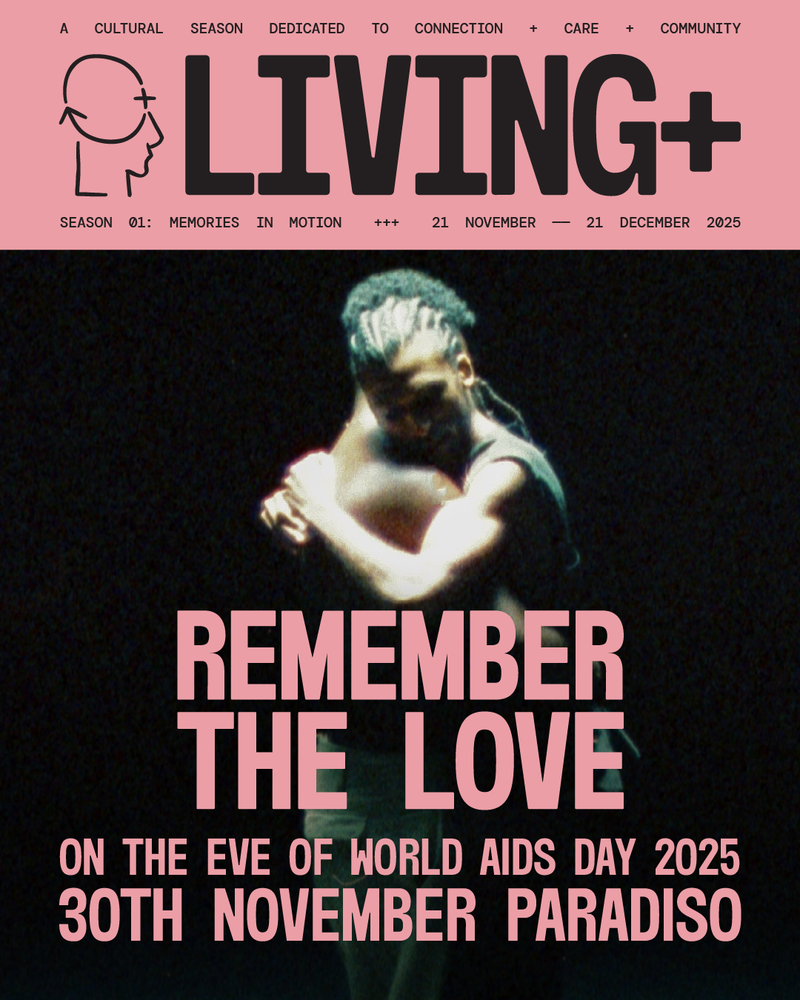
Living+ at Paradiso
Living+ at Paradiso
On the eve of World AIDS Day, Living+ gathers in Paradiso’s Small Hall for an intimate evening of remembrance and artistic encounter. Inspired by the historic Seropositive Ball and Love Ball, which once filled this city with bright, defiant life, Remember the Love carries their spirit into a contemporary, quieter form shaped by tenderness, memory and community.At the heart of the evening is a special fundraiser for IHLIA, the Amsterdam-based heritage organisation for LGBTIQ+ history in the Netherlands and home to the largest LGBTIQ+ collection in Europe. As essential archives like IHLIA face increasing financial pressure, this initiative is led by a younger generation that understands its place in a lineage and seeks to honour the histories that shaped it. Guests can support the fundraiser throughout the night or via the dedicated link.The programme opens with the world premiere of Only You, performed by yazija, the long-durational performance vehicle of the artistic and social practice bsdwcorp, founded by J.G. Basdew. For this occasion, yazija is accompanied by Sabiá on piano, who created the arrangements from Basdew’s original compositions. Rooted in music and active remembrance, Only You unfolds as an intimate act of listening and witnessing in which sound becomes a vessel for memory. Personal histories open into a shared emotional landscape, offering an early glimpse of a larger presentation to come during World Pride 2026.The programme then flows into a Solidarity Gathering hosted by R.U.I.S. Collective (Remembering Us in Solidarity). R.U.I.S. is a queer-led, anti-capitalist movement that reimagines nightlife as a space of resistance, care and political imagination. Known for transforming gatherings into sites of radical solidarity, R.U.I.S. brings together art, community and activism in a spirit of collective liberation.A soft DJ-set by Slimfit, co-founder of R.U.I.S. Collective, anchors the atmosphere as the Small Hall becomes a temporary archive of care, presence and reflection. Guests are invited throughout the evening to support IHLIA—ensuring that the histories preserved there remain accessible to younger generations encountering them for the first time. The evening closes warmly and gently in the same shared space.Remember the Love is part of Living+ (21 November to 21 December 2025), an international cultural programme exploring how art and intergenerational dialogue can bridge the widening gap between urgent public-health conversations and younger generations who often engage these histories at a distance. Its first season, Memories in Motion (2025), centres on the lived realities and emotional legacies of HIV/AIDS. Tickets are available now.-
Events
-
-
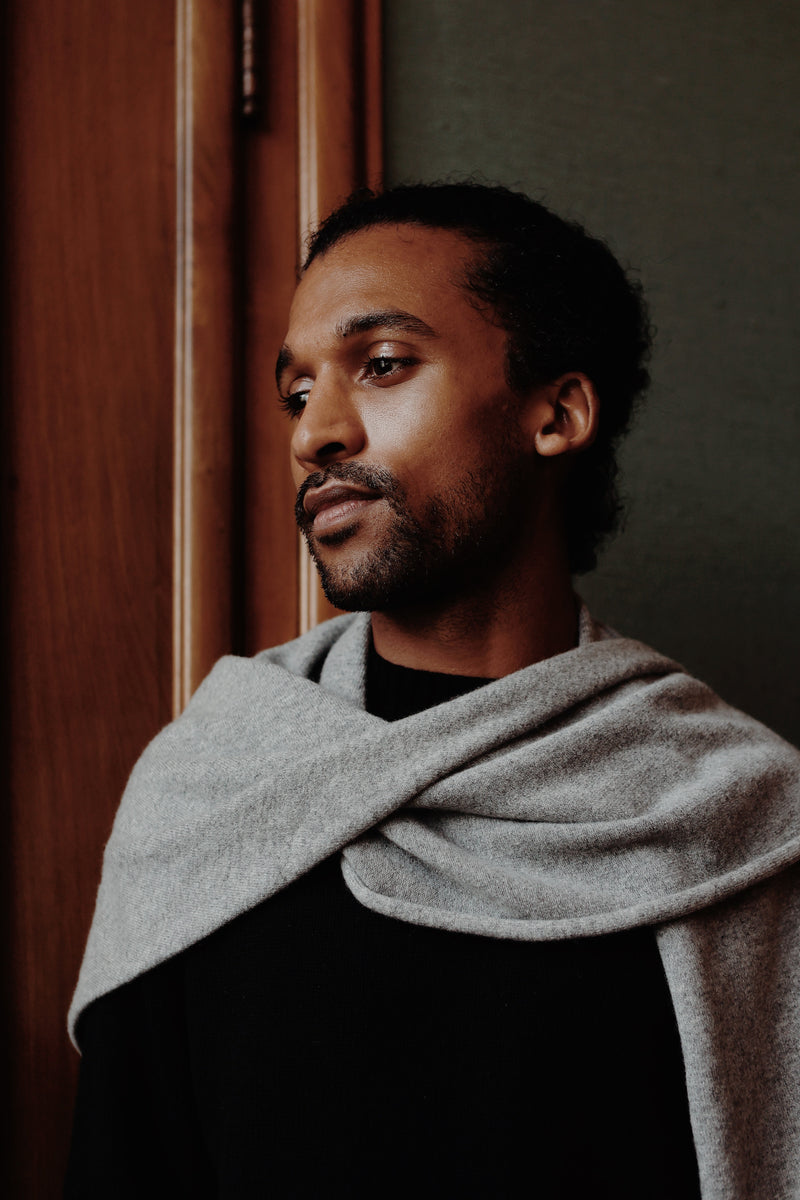
Living+: A Cultural Movement Redefining Public Health
Living+: A Cultural Movement Redefini...
Photographer by Yasemin Demirözcan | Location is the Amsterdam City Archives | Special thanks to Sophie Tates and Eric Heijselaar | Jacquill G. Basdew wears a full look by Extreme Cashmere | Interview by Passion Dzenga In a time when public health is often discussed in ways that feel distant, clinical, or inaccessible, socio-cultural initiator Jacquill G. Basdew is reshaping the conversation—rethinking how arts, culture, and intergenerational dialogue can be used to transform complex issues into something younger generations feel compelled to engage with. With Living+, a new recurring initiative, he brings greater cultural visibility to urgent public health themes - fostering understanding across generational and social lines, and working toward a society where care, awareness, and belonging are more widely shared.Launching this winter in Amsterdam, the first edition—Memories in Motion—runs from November 21 to December 21 and focuses on HIV/AIDS. While medical advances have changed the course of the epidemic, public understanding has not kept pace. Much of the conversation now takes place in institutional or scientific settings—often far removed from the cultural awareness of younger generations. Through archival research, performance, nightlife, and remembrance, Living+ bridges that gap, honouring the past while reactivating a conversation that remains deeply present. But for Jacquill G. Basdew, the story starts much earlier - and much closer to home.Let’s start at the beginning - you chose to open Living+ with a focus on HIV/AIDS - a subject layered with history, stigma, and ongoing relevance. What led you to begin there?HIV/AIDS has been a recurring presence throughout bsdwcorp., the socio-artistic practice I run. One of my earliest mentors, the esteemed British artist and filmmaker Sir Isaac Julien CBE RA, introduced me to the work of bell hooks, which opened a portal to the worlds of Black queer trailblazers such as Marlon Riggs and Essex Hemphill, and later to conversations with Sunil Gupta, Ajamu X, and younger artists like Clifford Prince King. Across generations, HIV/AIDS has been a red thread in their lives and work, and that thread runs through mine too. As a Black queer man in the West, I often think: had I been born a decade or two earlier, it could have been me. I was fortunate to grow up in a time when treatment existed, when I could live freely and safely, but that freedom is shaped by the lives and losses of those who came before me. Their work inspires mine. Beginning Living+ with HIV/AIDS was not just a decision. It was a responsibility.Living+, lays focus on how conversations around HIV/AIDS can be made more accessible and resonant today. How do you see cultural memory and storytelling shaping public health narratives in this context?Conversations around HIV/AIDS have not disappeared, as shown by the recent International AIDS Conference in Kigali, but they often take place in scientific or policy-driven spaces that feel distant from everyday life. The language can be technical or abstract, which limits who feels invited in. With Living+, we are not reintroducing the topic. We are reframing how we talk about it. Cultural memory and storytelling make these complex realities more human and emotionally accessible. In a fast-paced media landscape, we need to meet people where they are. Through art, fashion, music, and cultural experience, we can open the door to deeper engagement and collective understanding.So in that sense, storytelling and cultural engagement become tools to reach people who might otherwise feel excluded from, or not even aware of, traditional public health conversations?Exactly. Symposiums and conferences are important, but they often speak to those who are already engaged. The wider public, especially younger generations, is not always invited into those rooms, and many are not even aware of the devastating early history of the epidemic. With Living+, we are trying to build a bridge between generations and perspectives. A dear friend of mine, the photographer Lyle Ashton Harris, who is based in New York, once reminded me how important it is to honour the conversations that came before us. It is not about reinventing the wheel. It is about adding to progress with care, with context, and with respect for those who paved the way.That brings us to the heart of the initiative. Could you share some of the key events and collaborations that will take place this winter as part of Living+?Absolutely! We kick off Memories in Motion, the first edition of Living+, on Friday, November 21, at the Amsterdam City Archives with a presentation of archival materials from the 1980s and 1990s that reflect the city’s early response to HIV/AIDS. It felt important to begin in a place where stories are preserved, remembered, and sometimes forgotten. This grounds the initiative in lived experience and honours a history of care and resistance.From there, the initiative unfolds into a month of public events, leading to a central moment on November 30 at Paradiso. That evening, which continues into World AIDS Day on December 1, builds on the legacy of the legendary Loveballs once held in the same venue. Expect a night of community, remembrance, art, dance and joy.You’re also collaborating with organisations outside of traditional cultural institutions, like Patta and Paradiso. Why?For us, it was important to work with partners who are deeply rooted in everyday culture. Patta and Paradiso, to us, are key voices in how people experience culture today. Their foundations in fashion and music allow them to speak directly to communities that more traditional institutions often do not reach. By standing alongside names like theirs, Living+ feels more open and familiar. Museums and theatres can still carry a sense of distance or exclusivity for many, while places like Paradiso and Patta feel inviting and accessible.And this is very much a pilot year, correct? You're testing what works and what doesn't?Absolutely. This first edition of Living+ is a real test run. We are putting a variety of moments out into the world to see what clicks and what does not. Once it is all wrapped up, we will take time to reflect, hear what people thought, and fine-tune things for next year. It is not just about launching something. It is about learning how to listen. We are especially curious about what tools actually help spark connection, especially among people who are culturally curious and looking for meaning, community, and ways to get involved. If something works, we want others - whether they are working in health, education, or the arts - to be able to take that and run with it. Living+ is our way of adding to the bigger goal of building a more open and less divided society.You’ve mentioned that this project could grow into a broader framework. How do you see Living+ evolving?We see Living+ as something that can grow far beyond this first edition. The plus in the name stands for everything that comes with being alive—complex, layered, ever-changing. It was never meant to be a one-off moment. This first chapter focuses on HIV/AIDS because of its deep cultural legacy and personal meaning for many of us. But over time, we hope to use the Living+ framework to explore other urgent topics in public health, from mental health to sexual well-being to the everyday systems of care that often go unseen. The bigger ambition is to build an open and evolving platform that uses culture to spark connection, encourage conversation, and bring more people into the fold in ways that feel meaningful and grounded in real life.You also mentioned that you're not a public health professional—but you're still shaping a powerful public health message through collaboration. How vital is collaboration to the Living+ project?Collaboration is everything. I am not a public health professional, and I don’t pretend to be. But I do believe in the power of bringing different forms of knowledge together. Living+ was never meant to be created in isolation. From the very beginning, we’ve worked with people from different disciplines - healthcare professionals, researchers, creatives, community organisers - because no single voice can carry the weight of something this complex.It’s in the meeting of perspectives that something meaningful begins to take shape. My role is to listen, to connect, and to create a space where these different forms of expertise can co-exist and inform each other. That’s how we move toward solutions that feel grounded, human, and lasting.In all of this, what has moved or inspired you most along the way?What keeps me going is realising how much incredible work is already happening. Every time I talk to someone about Living+, they connect me with someone else doing similar work. It’s inspiring to see that community already exists - we just need to connect the dots. That’s what I’m hoping this project will do: build community, bridge generations, and create space for joy, reflection, and solidarity.On the eve of World AIDS Day, Living+ gathers in Paradiso’s Small Hall for an intimate evening of remembrance and artistic encounter. Inspired by the historic Seropositive Ball and Love Ball, which once filled this city with bright, defiant life, Remember the Love carries their spirit into a contemporary, quieter form shaped by tenderness, memory and community.At the heart of the evening is a special fundraiser for IHLIA, the Amsterdam-based heritage organisation for LGBTIQ+ history in the Netherlands and home to the largest LGBTIQ+ collection in Europe. As essential archives like IHLIA face increasing financial pressure, this initiative is led by a younger generation that understands its place in a lineage and seeks to honour the histories that shaped it. Guests can support the fundraiser throughout the night or via the dedicated link.The programme opens with the world premiere of Only You, performed by yazija, the long-durational performance vehicle of the artistic and social practice bsdwcorp, founded by J.G. Basdew. For this occasion, yazija is accompanied by Sabiá on piano, who created the arrangements from Basdew’s original compositions. Rooted in music and active remembrance, Only You unfolds as an intimate act of listening and witnessing in which sound becomes a vessel for memory. Personal histories open into a shared emotional landscape, offering an early glimpse of a larger presentation to come during World Pride 2026.The programme then flows into a Solidarity Gathering hosted by R.U.I.S. Collective (Remembering Us in Solidarity). R.U.I.S. is a queer-led, anti-capitalist movement that reimagines nightlife as a space of resistance, care and political imagination. Known for transforming gatherings into sites of radical solidarity, R.U.I.S. brings together art, community and activism in a spirit of collective liberation.A soft DJ-set by Slimfit, co-founder of R.U.I.S. Collective, anchors the atmosphere as the Small Hall becomes a temporary archive of care, presence and reflection. Guests are invited throughout the evening to support IHLIA—ensuring that the histories preserved there remain accessible to younger generations encountering them for the first time. The evening closes warmly and gently in the same shared space.Remember the Love is part of Living+ (21 November to 21 December 2025), an international cultural programme exploring how art and intergenerational dialogue can bridge the widening gap between urgent public-health conversations and younger generations who often engage these histories at a distance. Its first season, Memories in Motion (2025), centres on the lived realities and emotional legacies of HIV/AIDS. Tickets are available now.-
magazine
-
-
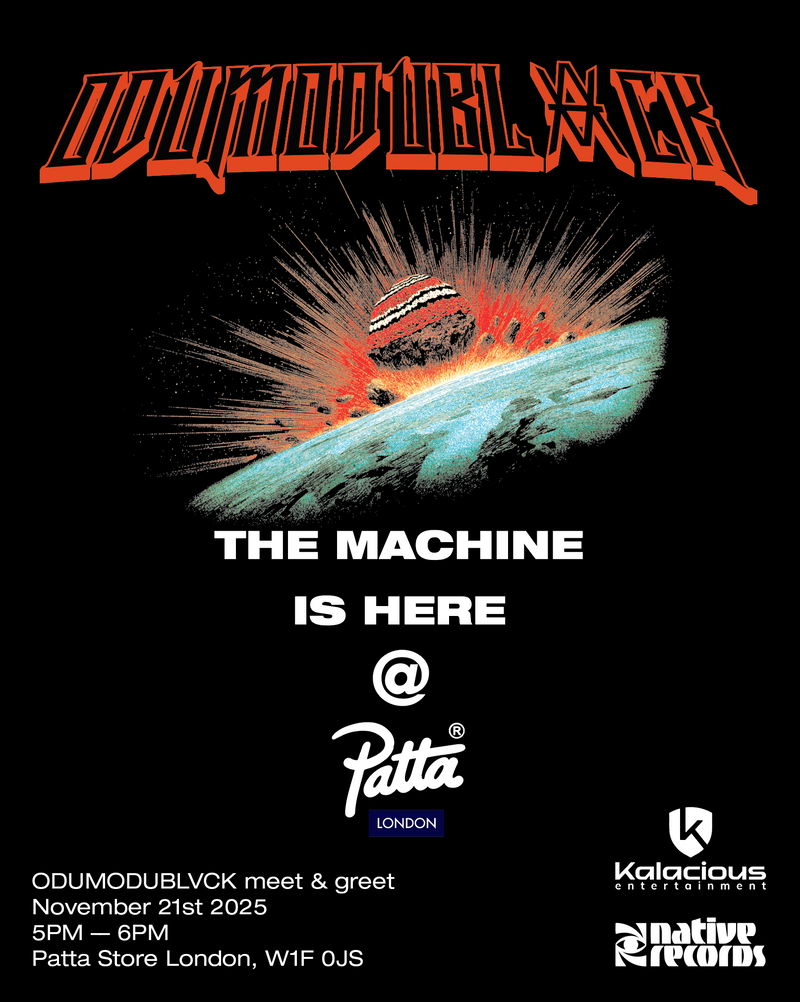
ODUMODUBLVCK at Patta London
ODUMODUBLVCK at Patta London
The Machine touches down in London. For one afternoon only, Odumodublvck is connecting with Patta London ahead of his headline show at Drumsheds this Friday, November 21st. Join us in-store for an exclusive chance to purchase the limited Patta x Odumodublvck T-Shirt, available only during this special moment. First come, first served.-
Events
-
-
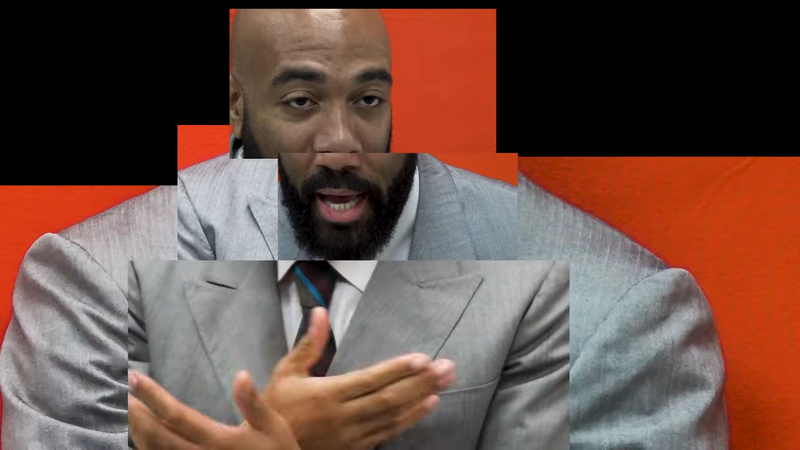
Murkage Dave - Swordfight In A Chicken Shop
Murkage Dave - Swordfight In A Chicke...
Murkage Dave is back with a brand new music video for Swordfight In A Chicken Shop-
Music
-
-
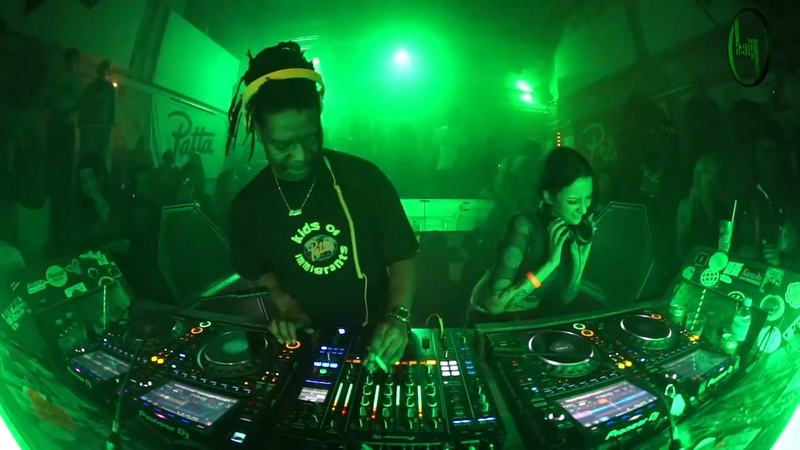
Mixtress & Passion DEEZ at Patta x Keep Hush
Mixtress & Passion DEEZ at Patta x Ke...
Patta x Keep Hush returned to Skatecafé for their third ADE takeover, curated by Passion DEEZ. This year’s event championed Amsterdam’s underground sound, past and present, with a lineup of DJs who’ve helped shape the city’s vibrant nightlife scene and those who will carve a path in coming years True to Keep Hush’s roots, the night was a celebration of underground club music, blending jungle, garage, dubstep, UK funky, drum and bass, and bubbling; reflecting the diverse and boundary-pushing energy that defines Amsterdam’s dance culture.-
Music
-








